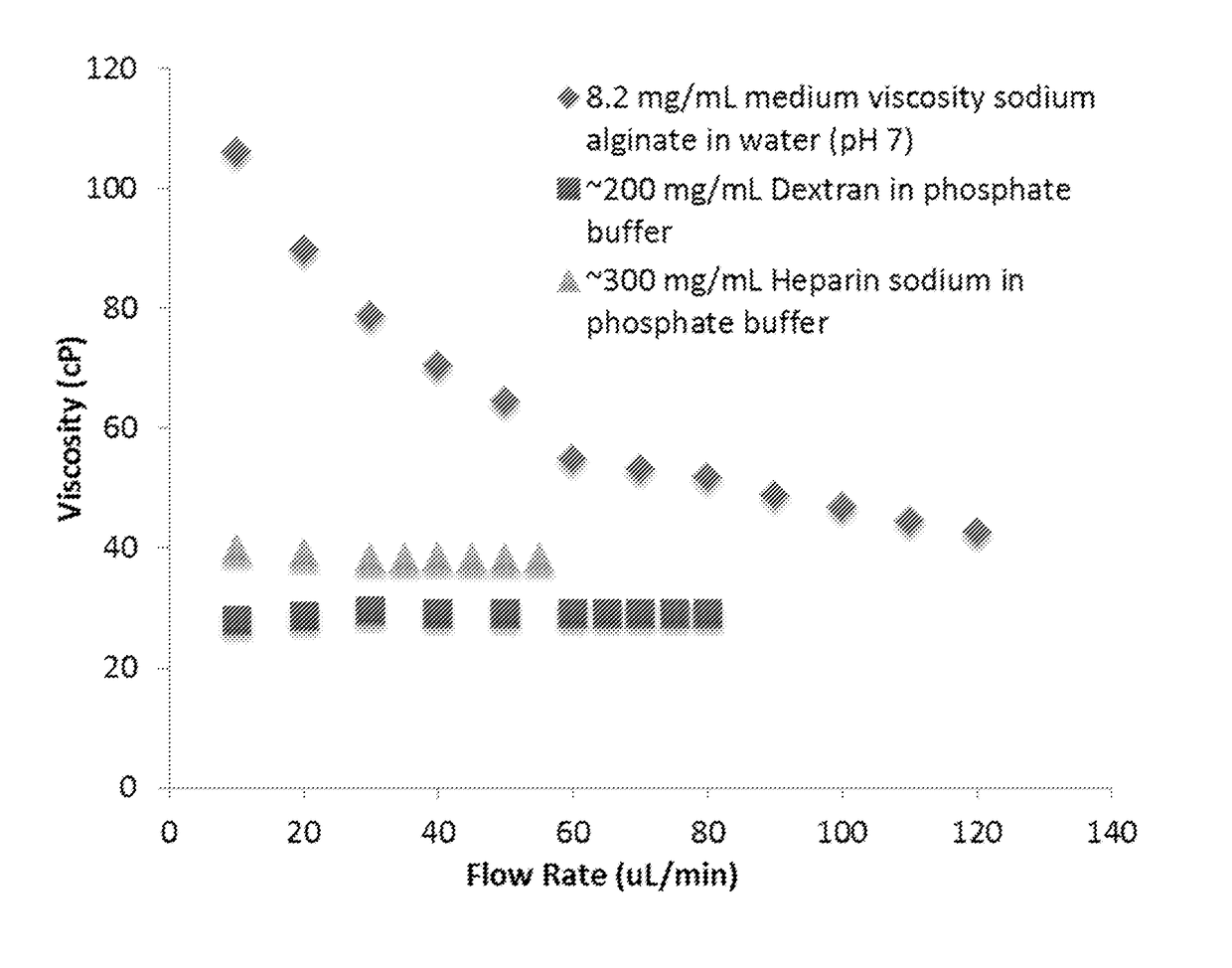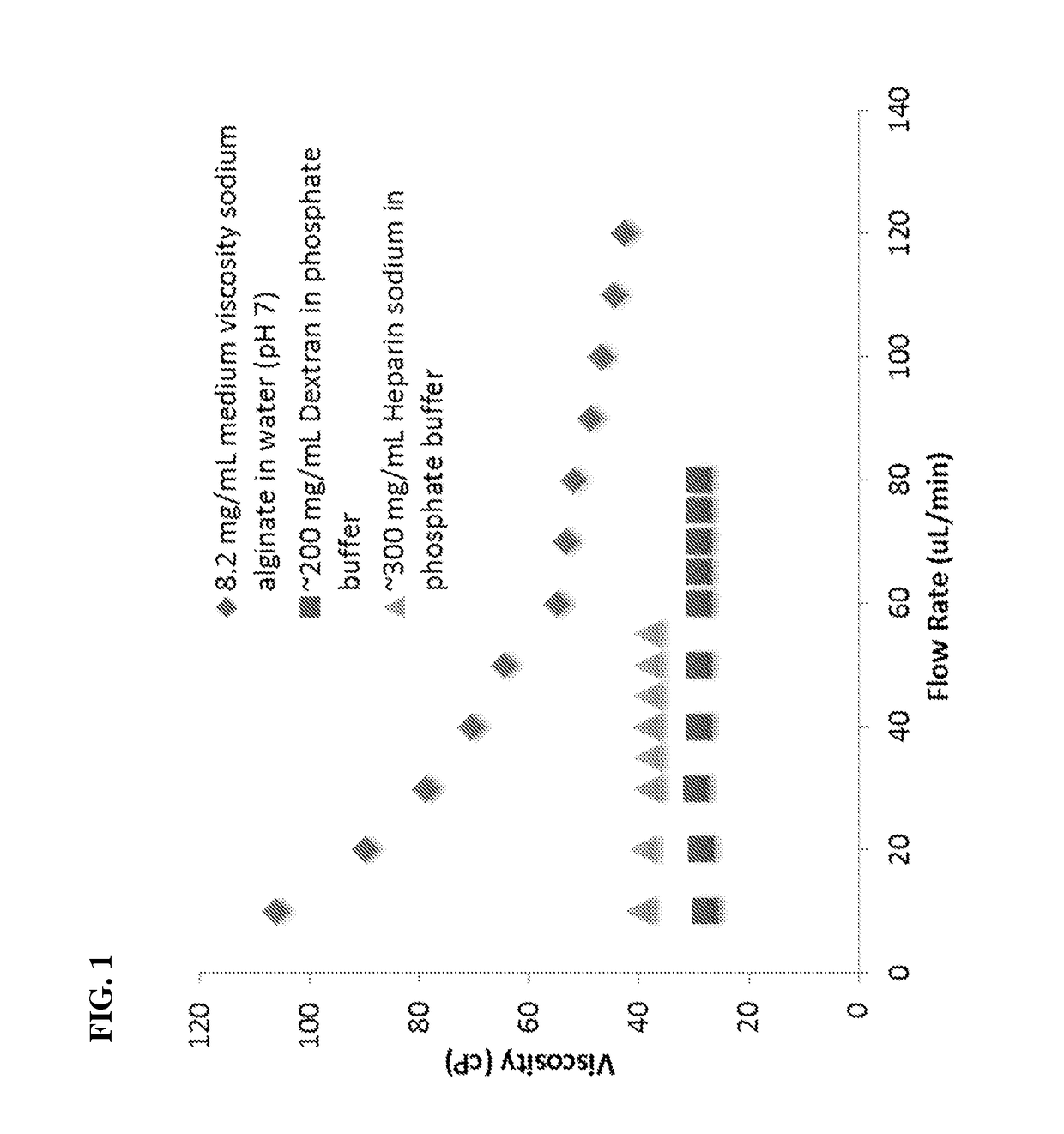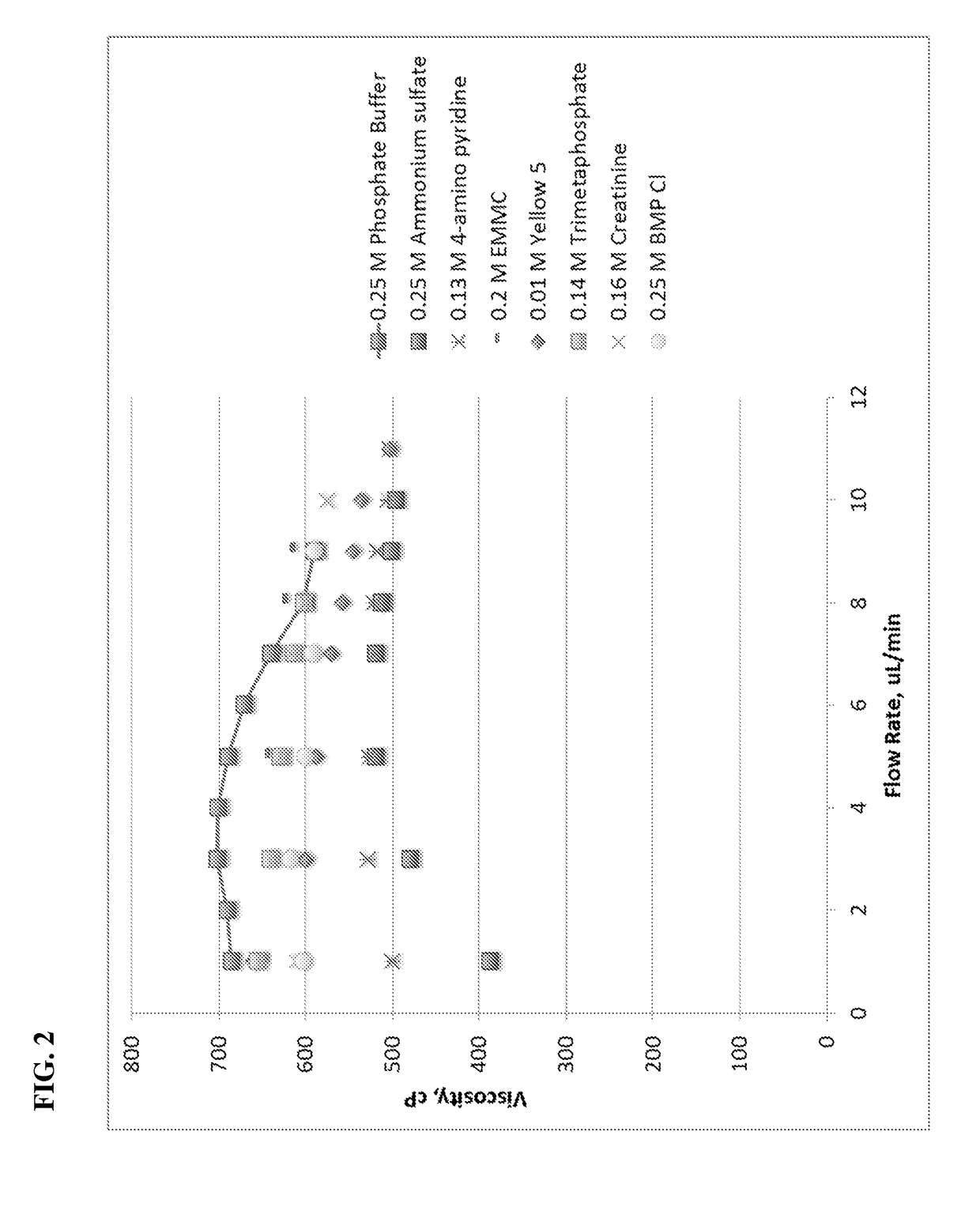Polysaccharide and nucleic acid formulations containing viscosity-lowering agents
a technology of nucleic acid and polysaccharide, which is applied in the direction of pharmaceutical non-active ingredients, pharmaceutical delivery mechanisms, organic active ingredients, etc., can solve the problems of disfavored high-viscosity formulations for storage and delivery of biological agents, high viscosity, and derived promising activity, so as to facilitate and/or accelerate reconstitution, facilitate processing, and reduce the viscosity of polysaccharide/nucleic acid solutions
- Summary
- Abstract
- Description
- Claims
- Application Information
AI Technical Summary
Benefits of technology
Problems solved by technology
Method used
Image
Examples
example 1
ntration Aqueous Solutions of the Polysaccharide Sodium Alginate Exhibit Non-Newtonian Flow while Aqueous Solutions of Heparin and Dextran Exhibit Newtonian Flow
[0435]Materials and Methods
[0436]Commercially-obtained sodium alginate of “low-viscosity” and “medium-viscosity” (Sigma Aldrich #A1112 and #A2033, respectively) were dissolved in MilliQ water with vigorous stirring (1100 RPM) and overnight mixing on a rocking plate shaker to the concentrations indicated below. The pH of the solutions was adjusted to 7.4 with aqueous HCl and / or NaOH. The reported extrapolated zero-shear viscosities were measured on a “B” chip using the mVROC microfluidic viscometer.
[0437]Heparin sodium salt, from porcine intestinal mucosa (Alfa Aesar #A16198), and Dextran (Avg molecular weight 150,000, Sigma Aldrich) were similarly prepared in aqueous phosphate buffer (0.18 M) without pH adjustment.
[0438]Results
[0439]The data in Table 1 demonstrate that the viscosity of a solution of sodium alginate in water ...
example 2
olutions of Heparin Sodium and Dextran Exhibit Reduced Viscosity in the Presence of Viscosity-Lowering Agents
[0440]Materials and Methods
[0441]Heparin sodium salt, Dextran, and DEAE-Dextran (diethylaminoethyl dextran) (approximate MW 500,000 Da) were prepared as described in Example 1 above, unless otherwise specified. After homogenous solutions were obtained, the solutions were aliquoted into 80 μL portions. 20 μL of aqueous concentrated viscosity-lowering agent (pH 7, 0.05-1.25 M) was added to each aliquot to afford final concentrations of 0.01-0.25 M agent. Phosphate buffer (pH 7) was used as a control, non-viscosity-lowering excipient. The aliquots were mixed by a positive displacement pipet and placed on a shaker plate for at least 30 minutes. The final concentrations of polysaccharides were about 200 mg / mL and 400 mg / mL (Table 3 and FIG. 2, respectively) for Dextran solutions and about 340 mg / mL for DEAE-dextran solutions (FIG. 3) (EMMC=4-ethyl-4-methylmorpholinium methylcarbon...
embodiment 1
[0446]In one embodiment, the invention provides a liquid pharmaceutical formulation for injection comprising:
[0447](i) one or more polysaccharides and / or nucleic acids;
[0448](ii) one or more viscosity-lowering agents; and
[0449](iii) a pharmaceutically acceptable solvent;
[0450]wherein when the polysaccharides and / or nucleic acids are combined with the solvent and one or more viscosity-lowering agents in a volume suitable for injection, the formulation has an absolute viscosity from about 1 cP to about 50 cP at 25° C., as measured, for example, using a cone and plate viscometer; and the absolute viscosity of the formulation is lower than the absolute viscosity of an otherwise substantially the same formulation but without the viscosity-lowering agent; and
[0451]wherein the absolute viscosity in each case is an extrapolated zero-shear viscosity.
PUM
| Property | Measurement | Unit |
|---|---|---|
| Temperature | aaaaa | aaaaa |
| Temperature | aaaaa | aaaaa |
| Fraction | aaaaa | aaaaa |
Abstract
Description
Claims
Application Information
 Login to View More
Login to View More - R&D
- Intellectual Property
- Life Sciences
- Materials
- Tech Scout
- Unparalleled Data Quality
- Higher Quality Content
- 60% Fewer Hallucinations
Browse by: Latest US Patents, China's latest patents, Technical Efficacy Thesaurus, Application Domain, Technology Topic, Popular Technical Reports.
© 2025 PatSnap. All rights reserved.Legal|Privacy policy|Modern Slavery Act Transparency Statement|Sitemap|About US| Contact US: help@patsnap.com



